Black History and Stories
Black History in Western Canada
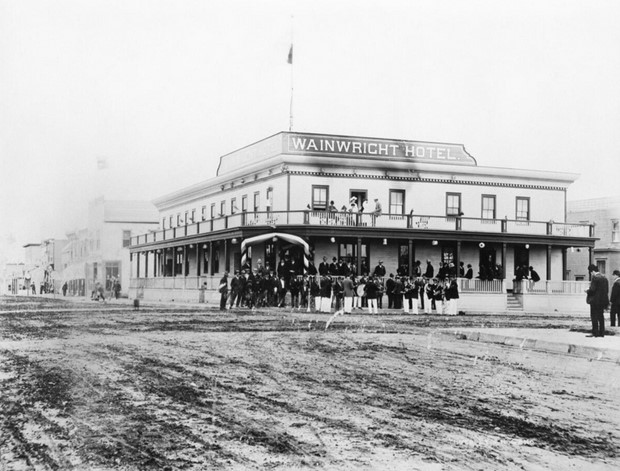
Tom and Lena Selectman
Tom and Lena Selectman’s immigration from the United States to Alberta in the early 1900s marked the beginning of a culinary legacy that left a mark on the local hospitality scene. Arriving in Alberta, they found employment as cooks in various small-town hotels, including the famous Wainwright Hotel from late 1910 until early 1912. Tom, with his exceptional culinary skills, served as the head chef, while Lena worked alongside him as a sous chef.
Their expertise in the kitchen quickly garnered attention. The Mirror Journal, a local newspaper, lauded the hotel under Tom’s leadership, remarking that “the cuisine of the new hotel seems to be in capable hands.”
Photo Credit: “Wainwright Hotel, Wainwright, Alberta.”, [ca. 1910], (CU178720) by Unknown. Courtesy of Libraries and Cultural Resources Digital Collections, University of Calgary.
Tom’s skills weren’t just recognized by publications; a former colleague from the Wainwright Hotel attested to his training on Canadian National Railway dining cars and praised him as an excellent chef.
Despite their significant contributions to the Wainwright Hotel, records of the Selectmans in Canada ceased after 1916, suggesting they likely returned to the United States. However, their legacy left a mark on the historical Wainwright Hotel, shaping its identity as a social hub within the town. Today, their impact is commemorated within the Historical Village, serving as a reminder of their remarkable talent and lasting influence.
Learn more about Selectman’s culinary legacy at the Park’s “Wainwright Hotel”
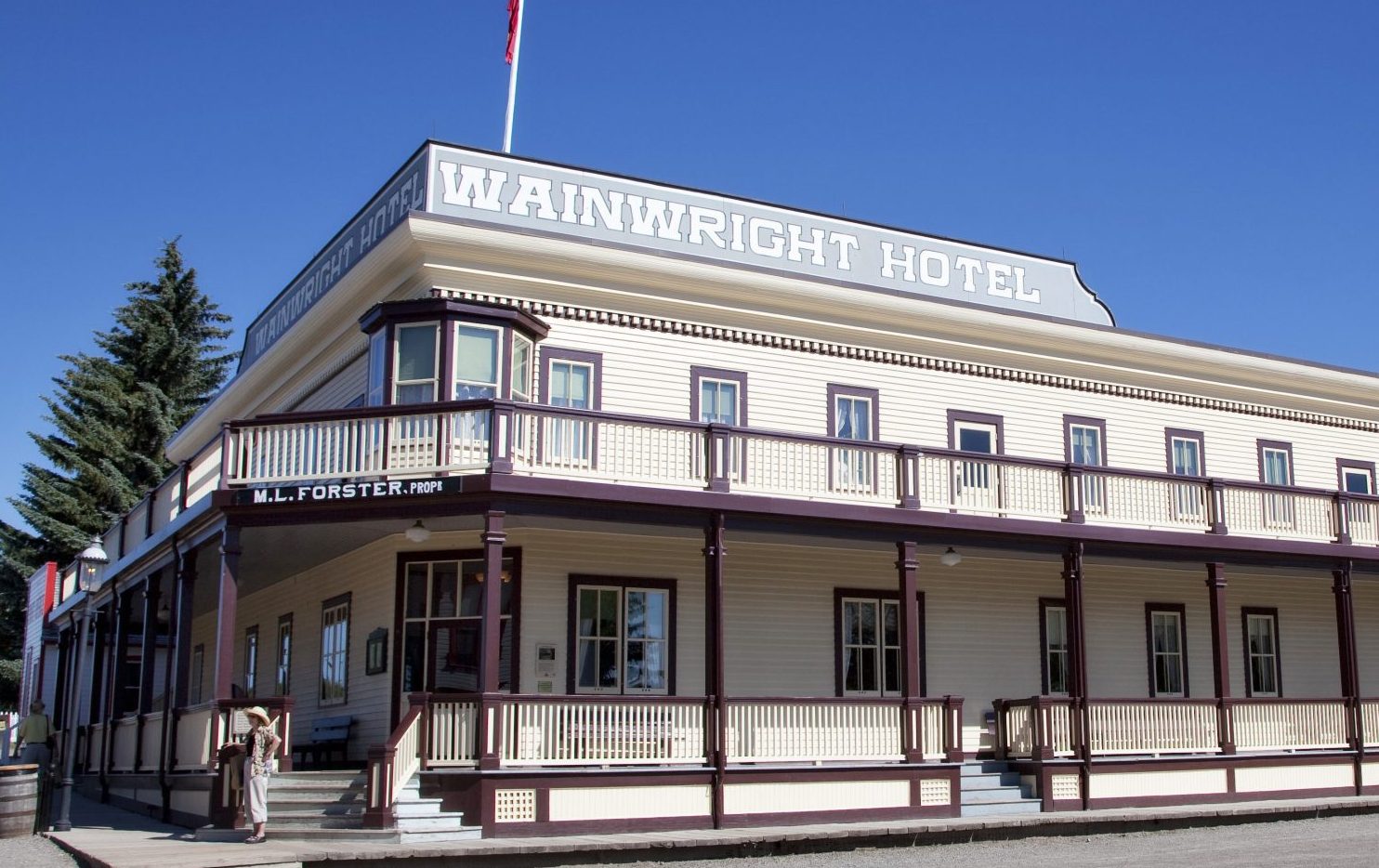
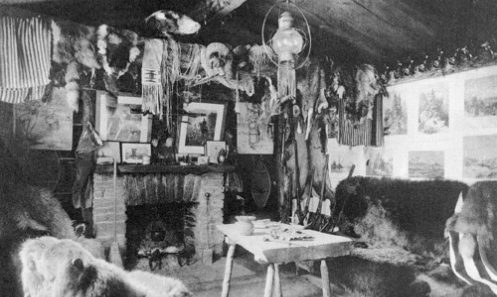
Joseph Lewis
The contributions of Black and indigenous people in the Southern States are well known, but their stories don’t end there; people of colour have also aided Canada’s development for hundreds of years. Amid Canada’s rich tapestry of history emerges Joseph Lewis, a Black fur trader.
Born in 1772 and hailing from New Hampshire, Joseph Lewis made his mark in what we call Alberta and Saskatchewan today. Notably, he holds the distinction of being the first Black person recorded in Western Canada, a testament to the often-overlooked diversity of the region’s history.
Photo Credit: [Furness’s fur room, 711 Locust Street]. (n.d.) hiddencityphila.org/2011/11/go-west-young-man/
While some details of Joseph Lewis and his legacy remain a mystery, historical fragments recount his role working for a Canadian outfit, speculated to be the North West Company– a prominent rival against the Hudson’s Bay Company at the time. In a notable shift in 1795, Lewis decided to switch allegiances and joined the Hudson’s Bay Company, serving as a steersman for several years. Throughout his career he served at several important fur trading centres across Western Canada, contributing to the economic and cultural landscape of the region.
Lewis met an untimely end when he was killed by a Blackfoot man in 1820, leaving behind a widow and three children. Despite his short life, his legacy remains as a prominent Black Canadian in a historical narrative.
A special thanks to Bertrand Bickersteth, a Canadian author and poet based in Alberta, who heavily contributed to the research of Joseph Lewis.
Discover the fur trade at the Park’s “Hudson’s Bay Company Fur Trading Fort”
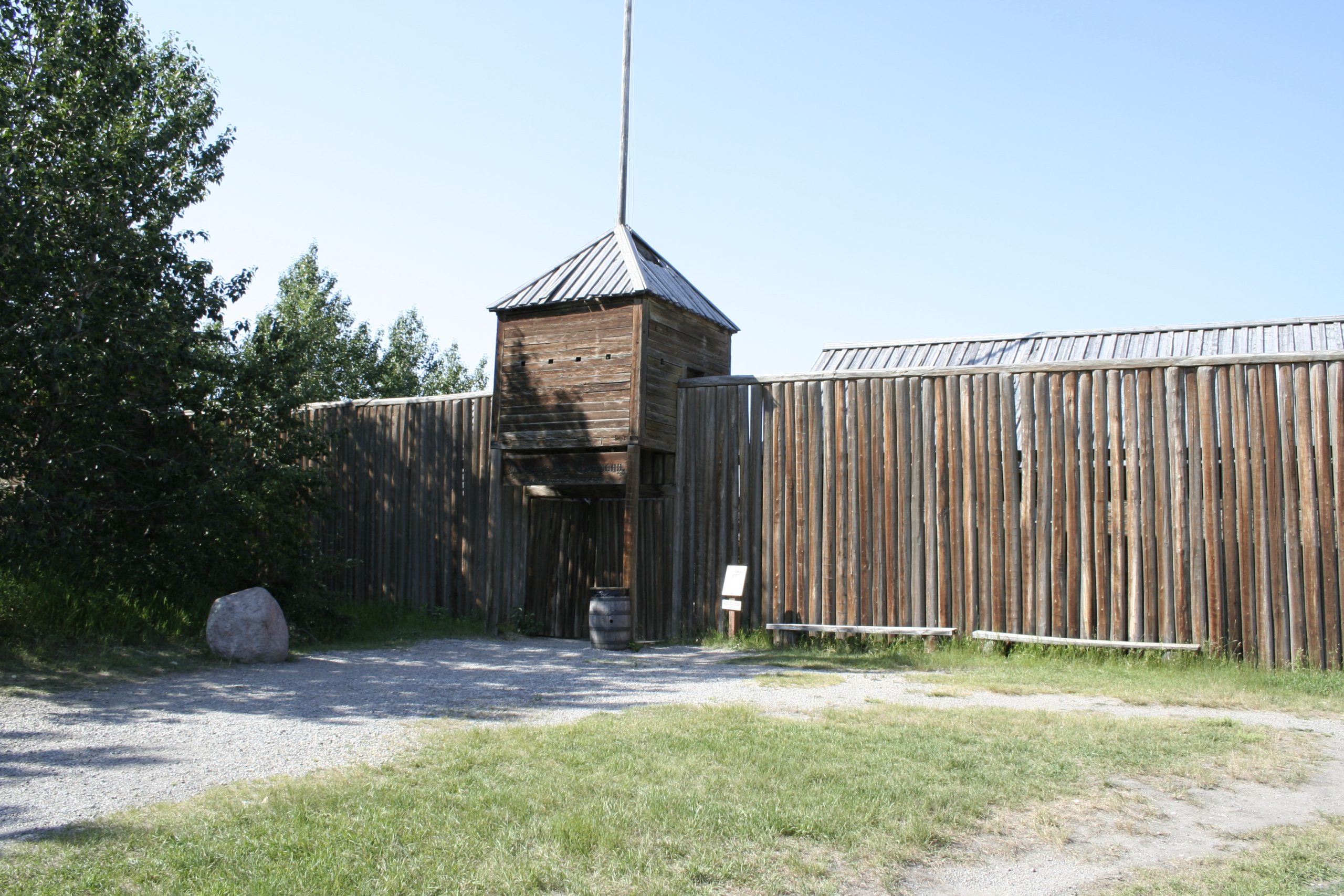

John Ware
John Ware was a skilled and highly respected cowboy and rancher who called Alberta home for the second half of his life. Born an enslaved Black man in the United States in 1845, Ware came to Canada after gaining his freedom towards the end of the American Civil War in 1865.
Arriving in the early 1880s with the North West Cattle Company, Ware helped to drive thousands of cattle to what is now known as Bar-U Ranch, a national historic site, in southern Alberta. While at Bar-U Ranch, he helped erect the Saddle Horse Barn – which stands on the site to this day. Ware worked at the Bar-U until 1884 and then took on a ranch of his own, becoming successful in the face of anti-Black racism and the tough conditions that came along with ranching in the 1880s.
Ware passed away in 1905 and had his funeral in Calgary, which was well attended by many members of the ranching community from across the southern Alberta region.
You can learn more about John Ware in the National Film Board documentary John Ware Reclaimed directed by local filmmaker, author and playwright, Cheryl Foggo.
Photo credit: “John Ware, rancher.”, [ca. 1902-1903], (CU174691) by Steele and Company. Courtesy of Libraries and Cultural Resources Digital Collections, University of Calgary.
Ware’s connection to Heritage Park comes from the Mackay Cabin, a pioneer log cabin, built somewhere between 1884-1885. Ware’s in-laws are believed to have rented the cabin at one point and Ware’s first child Nettie (Janet) may have been born in the cabin in 1893.
The city donated the building to Heritage Park. Since 1964 at Heritage Park, the cabin has served as a combination barbershop and harness shop, a print shop and a bakery. In 1976, it was moved to the Park’s settlement area, where it reprised its role as a residence.
A special thanks to Cheryl Foggo, a Canadian author, filmmaker, and playwright based in Alberta, who heavily contributed to the research of John Ware.
Learn more about Ware’s legacy at the Park’s “Mackay Cabin”
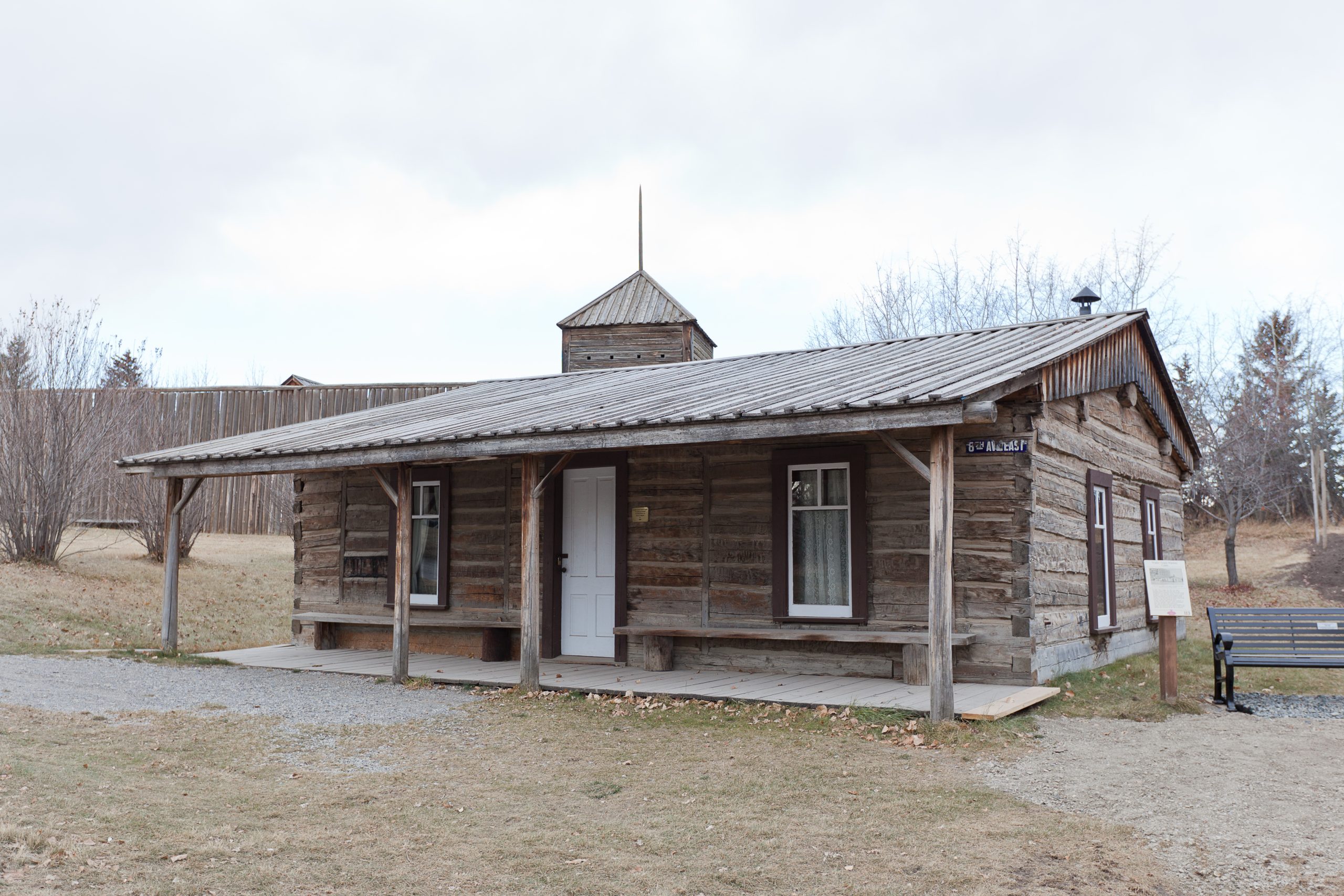
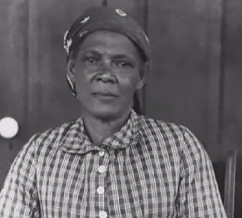
Annie “Auntie” Saunders
Annie “Auntie” Saunders spent over a century lost in history until Cheryl Foggo stumbled upon her story through a photograph intended as a gift for Colonel James Macleod’s family, bearing the simple yet significant inscription “Auntie.” Initially recognized as the nanny of the Macleod children in the late 1800s, Saunders’s narrative transcended beyond her role as a caregiver.
Following her time working for the Macleod family, Annie Saunders also ran several businesses, including a laundry service, a restaurant and even a catering business, just to name a few. We can only imagine the difficulties she had to face while running these businesses as a single Black woman in the late 1800’s.
Annie Saunders’ story sheds light on the resilience and entrepreneurship of Black women in the Canadian West, challenging stereotypes and contributing to the diversity of experiences within Canada’s historical narrative.
Photo Credit: “Annie Saunders,” [ca. 1890], by Unknown. Courtesy of “Black History Month: The untold story of ‘Auntie’ Annie Saunders in southern Alberta,” Global Calgary.
The Sandstone House is a replica based on Macleod’s real-life home in the late 1800’s likely housing Saunders as well. The original house, upon which the 2/3-scale Heritage Park replica is based, likely stood tall by 1887.
Annie Saunders’ presence in this home would have been integral, providing care and stability to the Macleod children. Her commitment and resilience illuminate the daily experiences of the Black pioneers who contributed to shaping early Alberta. The replica at Heritage Park symbolizes this history and provides a tangible connection to the past, inviting us to imagine Saunders’s presence within its walls.
A special thanks to Cheryl Foggo, an acclaimed author, filmmaker, and playwright spotlighting the lives of African-descended western Canadians.
Learn more about Saunders’ role at the Park’s “Sandstone House”
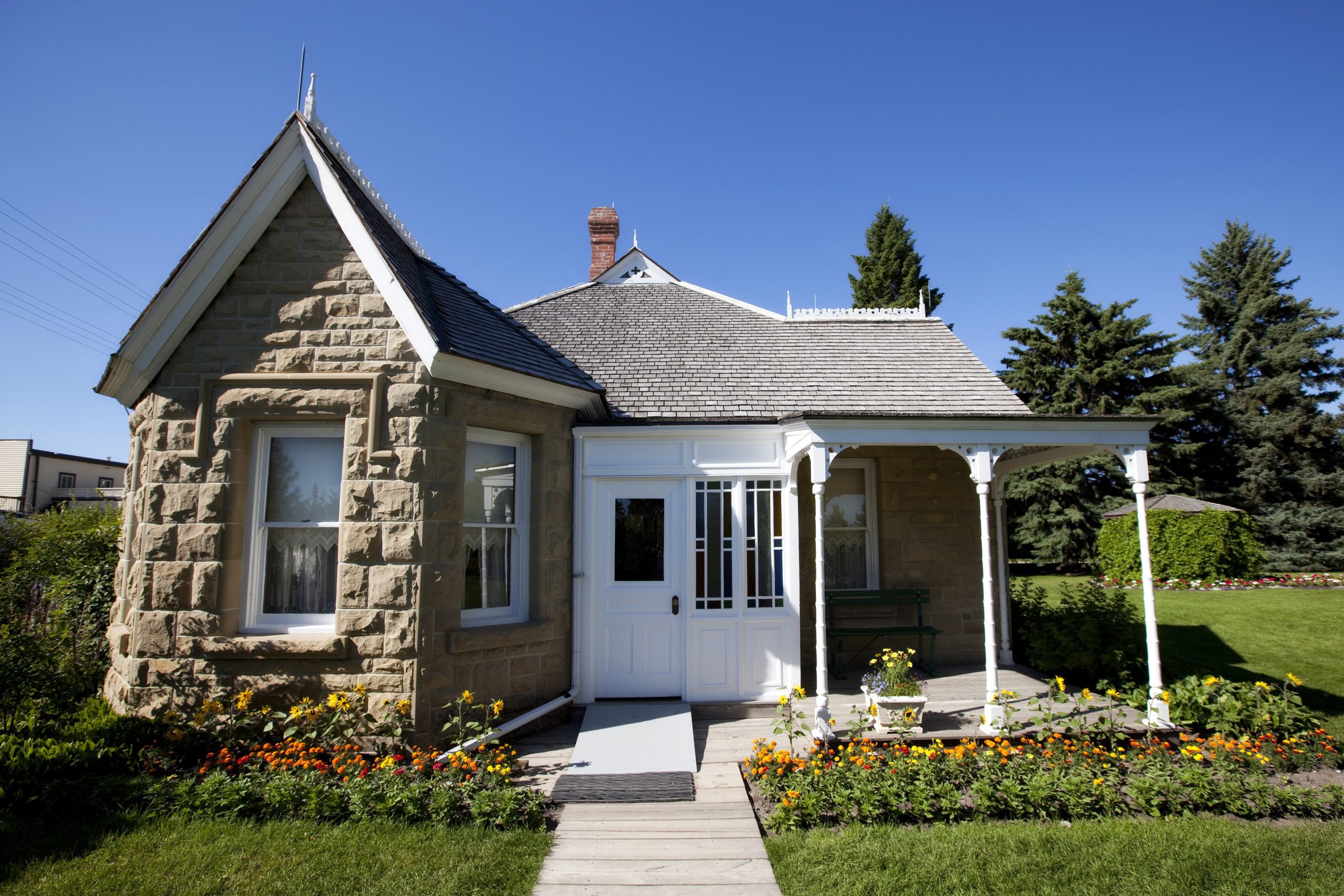
Contemporary Black Canadians: Podcast Episodes

‘Stories From the Park’
Explore Western Canadian history and its deep connections to Heritage Park Historical Village in Calgary, Alberta. Hosted by Chief Curator Kesia and Head of Communications Dominic, the series invites viewers on a captivating journey through time. Join Kesia and Dominic as they guide you through the diverse heritage of Western Canada, featuring engaging discussions with special guests from various academic backgrounds.
For Black History Month, ‘Stories from the Park’ featured contemporary Black historians, authors, and poets to teach the community about Black pioneers in Western Canada, some of which are mentioned above. Join Kesia and Dominic on a journey of discovery as they learn from Debbie Beaver, Cheryl Foggo, and Suzette Mayr in unique episodes discussing the lives of early Black settlers.
For a full list of podcast episodes covering a wide range of topics, from Sikh history to an exclusive interview with Terry Fox’s brother Darrell, please visit PODash. Click the link below to access the episodes.
Debbie Beaver
Debbie Beaver is an administrative assistant in the University of Alberta’s Department of Psychology, and is a proud Canadian with a lineage deeply rooted in the country’s history. Beaver co-founded the Black Settlers of Alberta and Saskatchewan Historical Society in 2005 along with other descendants of Black settlers. Beaver shares the narratives of her ancestors and others like her, who have established multigenerational roots. The society has filmed 45 interviews with those who still recall those early days, with hopes to turn their stories into a documentary film.
In a new podcast episode, Heritage Park’s Strategic Communications Manager, Dominic Terry, and the Chief Curator, Kesia Kvill, learn about settlers who came from the United States, making their way to settlements around the Edmonton area. Their guest, Deborah Beaver, is a descendant of those people who made their way from the Eastern United States and eventually found their way to settlements like Campsie, near Barrhead, where she grew up.
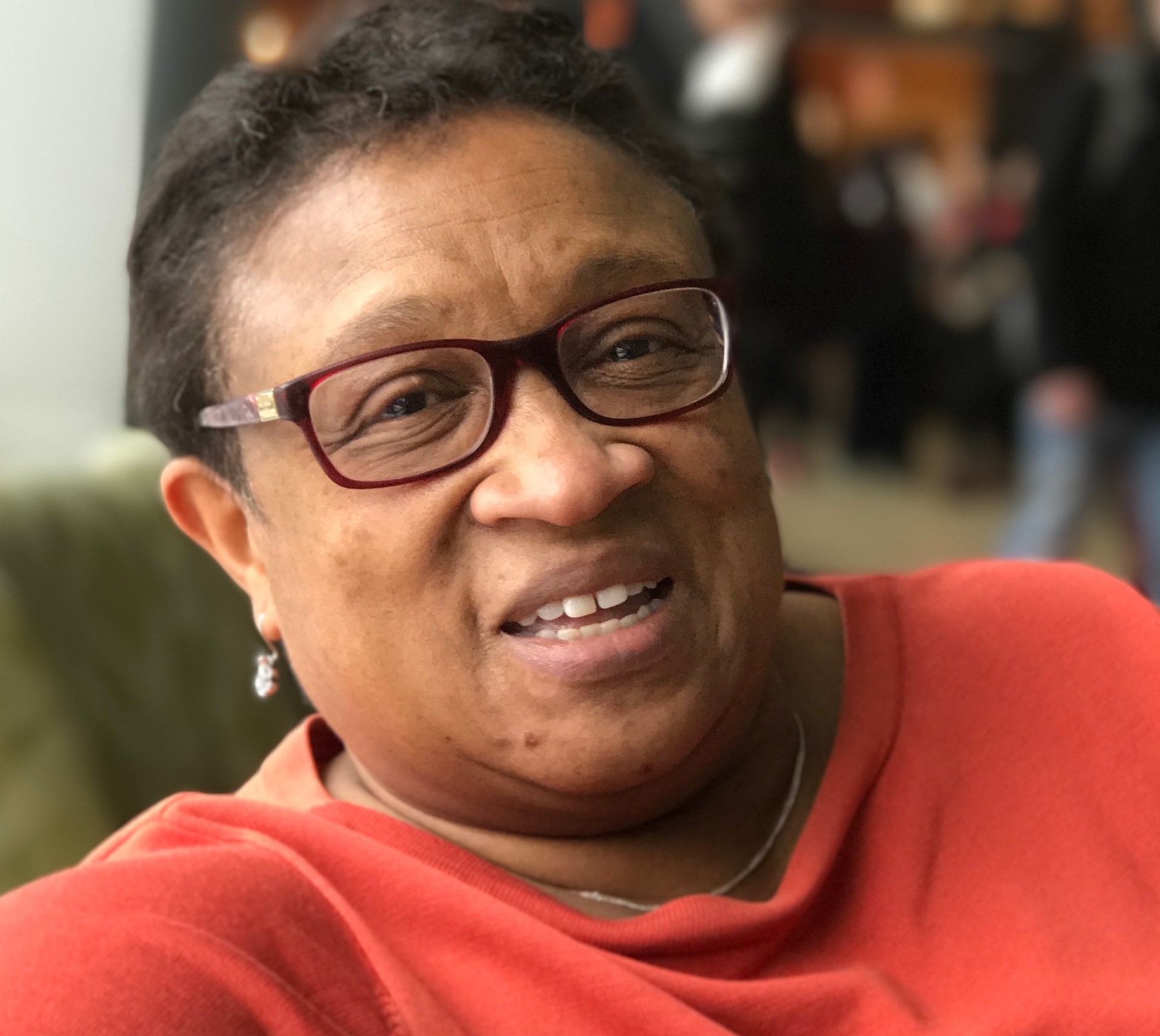

Cheryl Foggo
Meet Cheryl Foggo– an acclaimed author, filmmaker, and playwright spotlighting the lives of African-descended western Canadians. Recognized with Heritage Park’s ‘Women Making History in Alberta’ Award in 2023, Foggo inspires through her storytelling. Explore her impactful works, such as her 2020 documentary ‘John Ware Reclaimed‘ and a 30th anniversary edition of her first book Pourin’ Down Rain: A Black Woman Claims Her Place in the Canadian West, first published in 1990.
In our special Black History Month episodes of Stories from the Park featuring Cheryl Foggo, we learn about Black history in western Canada, including why and how members of the community began migrating to the area and where they settled. We’ll also explore the stories of John Ware and the Selectmans, among others, discussing the connections of the Black community to Heritage Park’s Historical Village.
Suzette Mayr
Suzette Mayr, born and raised in Calgary, is an accomplished writer with a strong academic background. She holds an Honours bachelor’s degree in English from the University of Calgary, as well as a Master of Arts in Creative Writing from the University of Alberta and a PhD from the University of New South Wales. With six novels, including the award-winning “The Sleeping Car Porter,” Mayr is recognized for her contributions to literature. In addition to novels, she has published poetry collections. Currently a professor in the Department of English at the University of Calgary, Mayr’s writing often delves into themes of race, identity, and sexuality with a blend of humor, cultural mythologies, and surreal imagery.
In this episode Dominic and Kesia speak with Suzette Mayr, Giller Prize winning author of The Sleeping Car Porter – a fictionalized account of a porter and one harrowing trip across Canada. They touch on the history of the porters, their legacy and their impact on labour movements on the railway.


